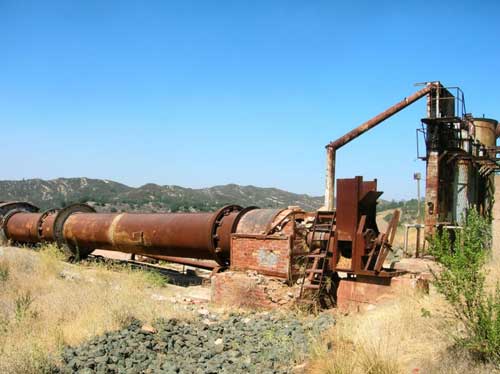 by Preston MacDougall August 29, 2007
By design, the 1941 movie created quite a stir, and media magnate William Randolph Hearst unsuccessfully tried to stop the release of the film, which had numerous, and highly unflattering, parallels to his own life. This of course only increased the public's interest in the movie, and over time helped solidify its stature as the most acclaimed movie of all time, according to voting critics. Just before they're old enough to vote, however, critics seem to favor the "Mad Max" trilogy - for guys because of the cars and swift justice, and for girls because of Mel Gibson, young, sober and in leather. My recent travels in San Luis Obispo County, nestled between the Santa Lucia Mountains and California's scenic central coast, took in sites that reminded me of both films. One is a California State Park, and the other was a Bureau of Land Management "Superfund" clean-up site. I needed tickets to see Hearst San Simeon State Historical Monument - better known as Hearst Castle - but the abandoned and detoxified Rinconada Mine was free. All I had to do was take a wrong turn on Rinconada Trail.
condenser - unwanted extras from the California Gold Rush. Credit: P. J. MacDougall
Mercury is toxic, and proximity to large-scale production or use of mercury - such as in beaver fur treatments during the manufacturing of felt hats - gave rise to the expression "mad as a hatter". Mercury is also used in barometers, thermometers and thermostats, not to mention some flash-in-the-dark running shoes. Historically, the most significant use of mercury has been in the mining of silver and gold, which is how the Hearst family first made its fortune in California. In this out-dated mining method, pure mercury is added to ores containing the precious metals, which are effectively dissolved to form a liquid amalgam. After gravity separates the celebrity atoms from the extras, the mercury can later be removed by evaporation, recovered, and used again. Silver, gold and mercury have the atomic symbols Ag, Au and Hg, respectively, which are all derived from their Latin names. Their chemical similarities to one another are what make the amalgam form spontaneously. This is one of several so-called "triads" that chemistry students must learn about. Triads are elemental threesomes on the periodic table - usually in a column, but sometimes forming a triangle with the 90-degree angle on the bottom-left. The silver, gold, mercury triad is triangular and near the lower central coast of the periodic table. In chemistry labs of today or yesteryear, whenever a mercury thermometer is broken, one step in the clean-up is to dust the spill with elemental sulfur that has been ground into a fine yellow powder. Silver, gold and mercury have similarities that lead to weak but practical affinities, but sulfur and mercury form a strong chemical bond that is rock stable. Cinnabar is the name of the mineral that results from a one-to-one marriage of mercury and sulfur atoms. However, while less unstable than a lovers' triangle, even the most rock-solid marriage may not be able to resist all possible stresses and strains. For instance, when scarlet-red crystals of cinnabar are crushed and heated in gigantic "roasters", they decompose into mercury and sulfur. The sulfur will burn in the air, giving off the same sharp odor that you smell after lighting a match - sulfur dioxide - resulting in acidic depositions downwind of the mine. Elemental mercury vapor will pool in cast iron condensers, where the temperature is much lower, and this is what would be sold to gold mines or hat factories. However, not all of the mercury will condense and escaping mercury vapor is much more of an environmental concern than the acid rain. With environmental awareness, and technological improvements, demand, and hence production, of mercury has greatly fallen. In fact, the only mercury that I saw during my recent sightseeing in California, was the torso of an ancient marble statue of the Roman god Mercury that is among the magnificent art collection of William Randolph Hearst. Perhaps the cleaning staff referred to it as Rosebud.
E-mail your letters & opinions to editor@sitnews.us SitNews ©2007 Stories In The News Ketchikan, Alaska |
